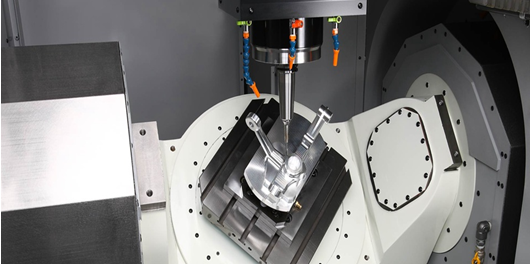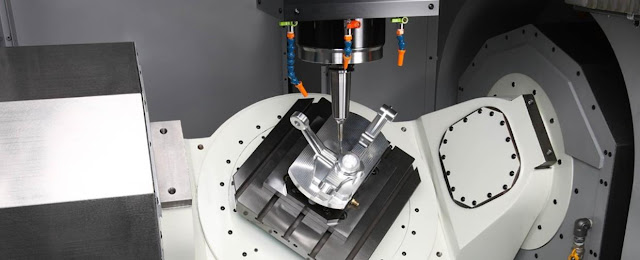What Is Rapid Prototyping Manufacturing ?
Rapid Prototyping Manufacturing
Back in the days, coming up with a design from
conceptualization to its output would take long, and was costly compared to
modern times. The onset of rapid prototyping has brought about a couple of
changes in the production process.
Rapid prototyping involves bringing together
several crafts used to design the physical representation of a particular
object. It is made possible with the use of a 3D computer-aided design data,
popularly referred to as CAD. 3D printing technology is used in the
construction of the pieces used in assembling.
Rapid prototyping manufacturing is the most
preferred procedure by most tech industries because of its ability to bring out
high precision and top quality models. There is a wide range of items that
cater for both medical and industrial applications using traditional 3D
systems. This procedure is also preferred by many because it is solid-free.
A production prototype is an example of a
product. It is discharged to producers and who test its ability to work
successfully before forwarding it for production. Aspects like longevity, work
rate, the cost, and production difficulties can all be ascertained through the
creation of a precise prototype.
Before the rapid prototyping technology was introduced,
this method was very slow and expensive than it is today. Developing products
was not a straightforward affair, and this led to the dissolution of most ideas
even before they were implemented or used for a test run. We have seen
significant progress in rapid prototyping technology over the past few years
which has brought about improvements in the prototyping procedure.
The method used in rapid prototyping can be summarized into the following steps:
The method used in rapid prototyping can be summarized into the following steps:
- Construction
of a computer-aided design (CAD) model
- Conversion of the model into stereo lithography
(STL) format.
- The
rapid prototyping machine is used to process the STL file by producing cut
portions of the model.
- Various
parts of the physical model are then produced.
- Anything
that holds up the structure of the model is removed.
- The outer part of the model is now complete and can be cleaned.
Rapid prototyping types and how
they are used
There are various procedures of rapid
prototyping which can be used depending on the design created or the materials
that are to be used. They include:
3D printing
It was introduced during the early 90's by
students from the University of Massachusetts. 3D printing is now common in
most places, some people even referring rapid prototyping to as 3D printing
despite the different methods used. This type of printing works by setting up
several lines or columns of powdered substance, and the use of a liquid joiner
to come up with a solid shape.
Selective
laser sintering
This procedure was also introduced in the
mid-80's. Also known as SLA printing, it involves the use of printers to come
up with a solid substance. All this is made possible by the use of thin layers
of light-activated resin. For every layer of resin used, ultraviolet rays are
directed towards it to help turn it into a solid state.
There is a file format used by computer-aided
designers (CAD) to come up with three 3D objects. Manufacturers are using the
format, popularly known as STL in coming up with computer-aided designs and
rapid prototyping.
Fused
deposition modeling
Fused deposition modeling was introduced in
the early 90's. It involves the creation of a 3D object with the use of
thermoplastic beads. They start hardening upon ejection, therefore, creating a
solid substance. One key benefit of fused deposition modeling is that several
tubes can be used in the extraction of beads, which makes it possible for the
formation of prototypes with different varieties of colors and distinct
materials.
The significance of rapid prototyping to the manufacturing
sector
The main benefit of using rapid prototyping in
production is the fact that can produce a definite model of an item, which
gives engineers, designers, and manufacturers the chance to study several
visible features of a particular object before starting in-depth production.
Prototypes can be examined for comfort design, artistic applications, and
output without difficulties.
Stereo lithography printing method is
especially beneficial when it comes to experimenting accuracy of parts. The use
of thin light-activated layers with stereo lithography printers helps in the
production of very accurate designs which can be used to analyze pressure,
steadiness of a load, balance, stress resilience, and simplified performance.
Rapid prototyping has helped reduce the design
process, or the time taken from when one comes up with a product idea to its
manufacture. One can come up with an accurate design in a span of one to two
days without spending so much money. If your model is endorsed, the industrial
production and organization of manufacturing equipment can start, while
finalizing the last bits of your design. This will help reduce the period of
production and save more costs.
Benefits of rapid prototyping manufacturing
Benefits of rapid prototyping manufacturing
Suppliers and customers are some of the people
who get to benefit most from fast prototyping manufacturing. Suppliers get to
use the designs made using the rapid prototyping process to give a more precise
valuation of manufacturing time and expense. Stereo lithography designs can be
used as the main arrangement used to make metallic sculpture. This will help
minimize the time required for factory arrangement and assembling.
Customers get to enjoy the benefits that come
with rapid prototype manufacturing when they get the chance have a hand on the
precise design of the item they want to develop. It gives them the confidence
to kick start the manufacturing process after examining the designs and make
several amendments. Customers also have the chance to save on both the design
and production process.
Conclusion
Rapid prototyping manufacturing has helped
make the production process easy by bringing out clear designs. Producers
should embrace this form of technology because of the benefits that come with
it. If you are looking forward to saving time and money, then rapid prototyping
manufacturing is the way to go.







Comments
Post a Comment